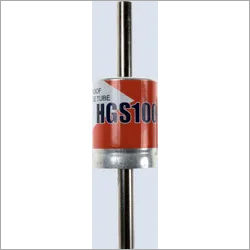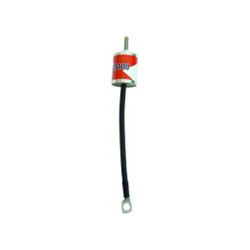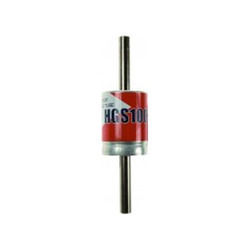- Home Page
- Company Profile
-
Our Products
- Signal System Protection Arresters
- Printed Circuit Board
- Stainless Steel Arrestors
- MS Protector Full SCH
- Master Slave Control Circuit Board
- Electric Surge Protection Equipment
- Spark Gap Switch
- Surge Protector
- Linksys Router
- Surge Protection Control
- Surge Protection Circuit Boards
- Data Protector Switch
- Data Protector Switch Board
- Surge Protector Circuit
- Data Line Transient Protector
- Data Protector Arresters
- Data Protector
- Telecom Co-axial SPD
- Telecom Surge Protection Device
- Surge Protection Devices
- Surge Protection SPD
- Solar Photovoltaic SPD
- Electric Coaxial Surge Protector
- Electrical Surge Protection Device
- Industrial Surge Protection Devices
- High Voltage Surge Protection Arrester
- Electric Circuit Boards
- Power Surge Arrester
- Power Arrestors
- Surge Arrester
- Lightening Arrestors Spark GAP
- Arrestors Plug
- Arrestors Power
- Lightning Arrester
- Protection Arrestors
- Arrester -
- Arrestors -
- Lightning Arresters Upto 1000 V
- Surge Protection Unit
- Lightning Arrester Unit
- Lightning Surge Protector
- Surge Switch
- B100 Lightning Arresters
- PIV12,5-275 Lightning Arresters
- PIV12,5-440 Lightning Arresters
- PIV-850 Lightning Arresters
- PIV12,5-275 DS Lightning Arresters
- PIV12,5-440 DS Lightning Arresters
- PIV12,5-150 Lightning Arresters
- PIV12,5-150 DS Lightning Arresters
- PIV12,5-75 Lightning Arresters
- PIV12,5-75 DS Lightning Arresters
- HS50-50 Lightning Arresters
- HS100 Arresters
- B50 Arresters
- HS55 Lightning Arresters
- Lightning Arrester Surge Protector
- HCS/3 0 Lightning Arresters
- HCS/3 0 DS Lightning Arresters
- HCS/3 1 Surge Arresters
- HCS/3 1 DS Lightning Arresters
- JK110 Lightning Arresters
- HG150 Lightning Arresters
- HZ110/3 0 Arresters
- PIV12,5-275/1 1 Lightning Arresters
- PIV12,5-275 DS/1 1 Lightning Arresters
- HS50-50/3 0 Lightning Arresters
- Arresters For Protection Of Signal Systems
- Surge Protection Devices DTB
- Surge Protection Devices DTB 1/12 /L
- DTB 1/48 /L Surge Protection Devices
- DTB 1/T /L Surge Protection Devices
- DTB 1/6 Surge Protection Devices
- DTB 1/24 Surge Protection Devices
- DTB 1/T Surge Protection Devices
- DTB 1/24 /R Surge Protection Devices
- DTB1/AR Surge Protection Devices
- DTB1/ART Surge Protection Devices
- DTE 1/6 Surge Protection Devices
- DTE 1/12 Surge Protection Devices
- DTE 1/24 Surge Protection Devices
- DTE 1/48 Surge Protection Devices
- DTE 1/T Surge Protection Devices
- DTNVE 1/24/0,5 Surge Protection Devices
- DTNVE 1/24/5 Surge Protection Devices
- Arresters DTB 485
- DTB 2/485 /L Arresters
- DTNVE 1/30/0,5 /L Surge Protection Devices
- Surge Arresters
- Outdoor DC Systems
- Outdoor AC Systems Surge arresters
- Arresters for Indoor AC System
- Indoor DC Systems
- Cathodic Protection Surge Arrester
- Surge Protection for Telephone
- ADSL Telecommunication Lines Surge Protection
- Type 2 / Class II / Class C Surge Arrester
- Type 1 2 / Class I II / Class B C Surge Arresters
- Spark Gap Lightning Arrester
- Lightning Current and Surge Arrester
- Surge Protection
- Surge Protection for Offices And Family Houses
- Surge Protection Devices for Industrial Applicatio
- Surge Protection Devices for Industrial Application
- Insulation Monitoring Devices
- Protection Of Photovoltaic Systems
- Pipeline System Protection
- Offshore Oil Applications
- Low Voltage Limiter
- Grade Crossing
- Lightning And Surge Protection Of A Wind Turbine S
- Surge Protection for VFD
- Lightning and Surge Arresters
- PV Surge Arresters
- Surge Filters
- Power Supply Protection Arresters
- Equipotential Bonding SPD
- Surge Arrester for Communication Lines
- Surge Protection Device
- Powerline SPD
- Insulation Monitoring Device
- Voltage Guard
- Circuit Boards
- Equipotential Decoupling Gas Discharge Tubes
- Ground Fault Equipment
- Lightning Conductors Equipment
- Metal Lugs
- Solar PV DC Surge Protection Device
- Spark Gap Lightning Arresters
- Isolation Spark Gap for pipelines
- Ethernet Surge Arrester
- Surge Protection for Signal Lines
- Solar PV Surge Arrester
- Combined Surge Arrester
- Surge Arrester for Data Lines
- Cable Gland
- Battery Terminal
- Bimetallic Connector
- Fasteners
- Signal System Protection Arresters
- Certification & Factory Tour
- Contact Us

Equipotential Bonding SPD
500.00 - 1000.00 INR/Piece
Product Details:
- Product Type Equipotential
- Material Metal
- Application For Electric Use
- Shape Round
- Voltage 240 Volt (v)
- Color Red
- Warranty Yes
- Click to View more
X
Equipotential Bonding SPD Price And Quantity
- 500.00 - 1000.00 INR/Piece
- 1000 Piece
Equipotential Bonding SPD Product Specifications
- For Electric Use
- Yes
- 240 Volt (v)
- Round
- Metal
- Red
- Equipotential
Equipotential Bonding SPD Trade Information
- Cash in Advance (CID) Cheque Cash Advance (CA)
- 1000 Piece Per Day
- 20 Days
- Yes
- Sample costs shipping and taxes has to be paid by the buyer
- Box
- Australia South America Western Europe Middle East Central America Asia Eastern Europe North America Africa
- All India
Product Description
Equipotential bonding involves joining together metalwork that is or may be earthed so that it is at the same potential (i.e., voltage) everywhere. Such is commonly used under transformer banks by power companies and under large computer installations. Exact rules for electrical installations vary by country, locality, or supplying power company.
Stray currents are inevitably propagated in an earthing network. It is impossible to eliminate all the sources of disturbances for a site. Earth loops are also inevitable. When a magnetic field affects a site, e.g. the field created by lightning, differences in potential are created in the loops formed by the various conductors and the currents flowing in the earthing system. Consequently, the earthing network is directly affected by any counter-measures taken outside the building.
As long as the currents flow in the earthing system and not in the electronic circuits, they do no damage. However, when earthing networks are not equipotential, e.g. when they are star connected to the earth electrode, the HF stray currents will flow wherever they can, including in control wires. Equipment can be disturbed, damaged or even destroyed.
The only inexpensive means to divide the currents in an earthing system and maintain satisfactory equipotential characteristics is to interconnect the earthing networks. This contributes to better equipotential bonding within the earthing system, but does not remove the need for protective conductors. To meet legal requirements in terms of the safety of persons, sufficiently sized and identified protective conductors must remain in place between each piece of equipment and the earthing terminal. What is more, with the possible exception of a building with a steel structure, a large number of conductors for the ligthning rods or the lightning-protection network must be directly connected to the earth electrode.
The fundamental difference between a protective conductor (PE) and a ligthning rod down-conductor is that the first conducts internal currents to the neutral of the MV/LV transformer whereas the second carries external current (from outside the installation) to the earth electrode.
In a building, it is advised to connect an earthing network to all accessible conducting structures, namely metal beams and door frames, pipes, etc. It is generally sufficient to connect metal trunking, cable trays and lintels, pipes, ventilation ducts, etc. at as many points as possible. In places where there is a large amount of equipment and the size of the mesh in the bonding network is greater than four metres, an equipotential conductor should be added. The size and type of conductor are not of critical importance.
It is imperative to interconnect the earthing networks of buildings that have shared cable connections. Interconnection of the earthing networks must take place via a number of conductors and all the internal metal structures of the buildings or linking the buildings (on the condition that they are not interrupted).
In a given building, the various earthing networks (electronics, computing, telecom, etc.) must be interconnected to form a single equipotential bonding network.
This earthing-network must be as meshed as possible. If the earthing network is equipotential, the differences in potential between communicating devices will be low and a large number of EMC problems disappear. Differences in potential are also reduced in the event of insulation faults or lightning strikes.
If equipotential conditions between buildings cannot be achieved or if the distance between buildings is greater than ten metres, it is highly recommended to use optical fibre for communication links and galvanic insulators for measurement and communication systems.
These measures are mandatory if the electrical supply system uses the IT or TN-C system.Enter Buying Requirement Details

 English
English Spanish
Spanish French
French German
German Italian
Italian Chinese (Simplified)
Chinese (Simplified) Japanese
Japanese Korean
Korean Arabic
Arabic Portuguese
Portuguese

